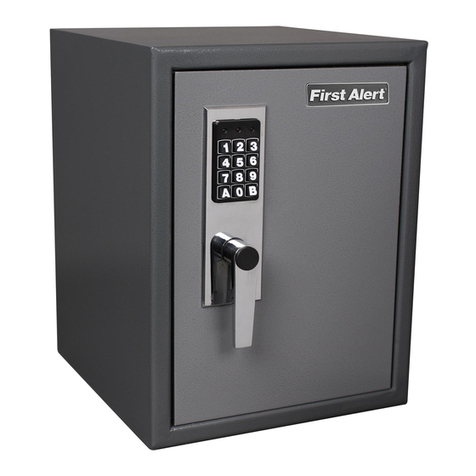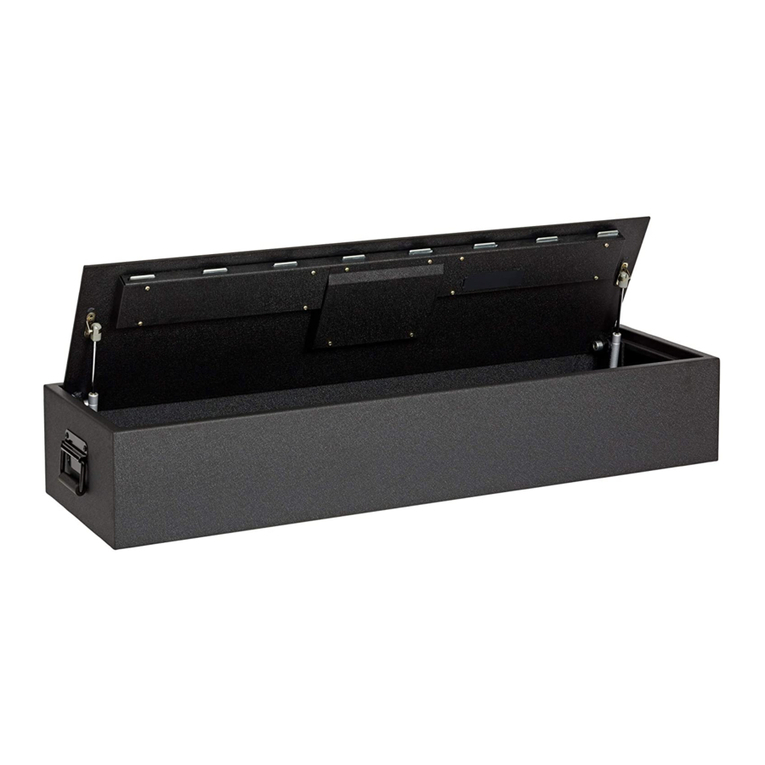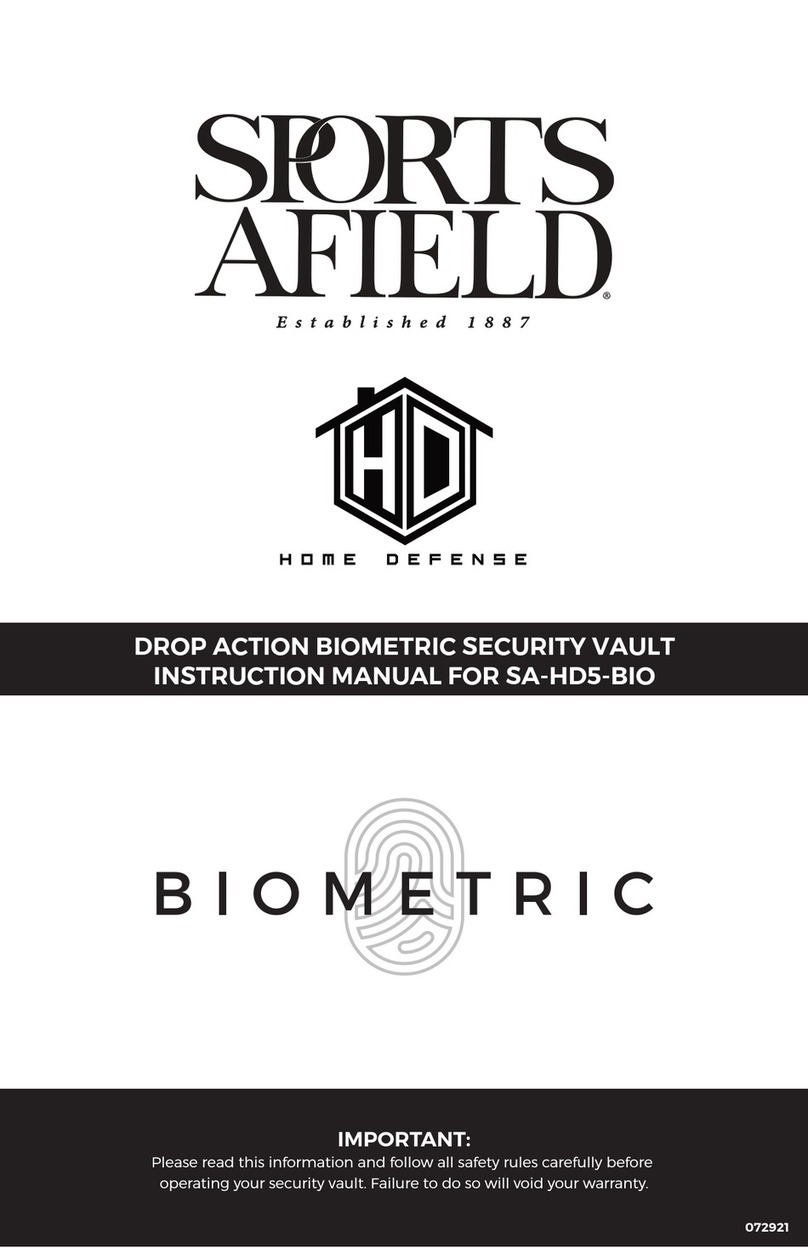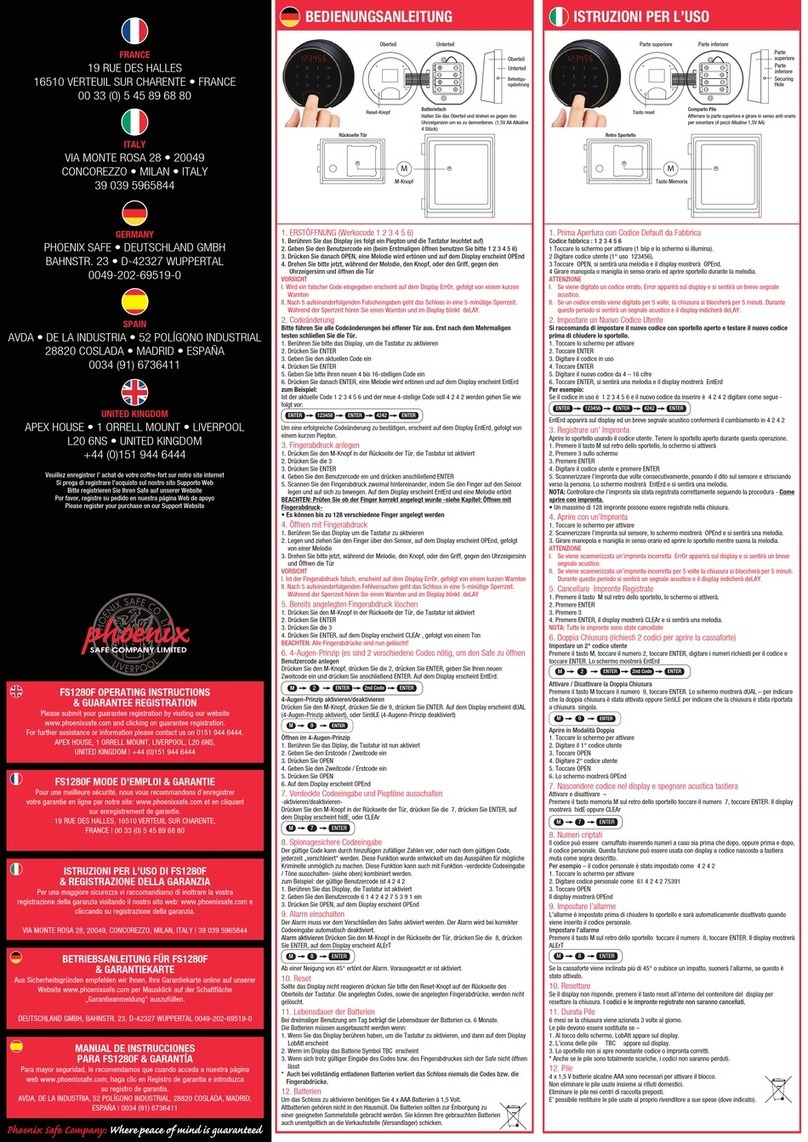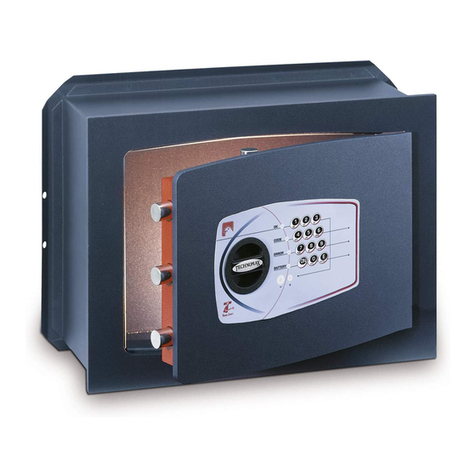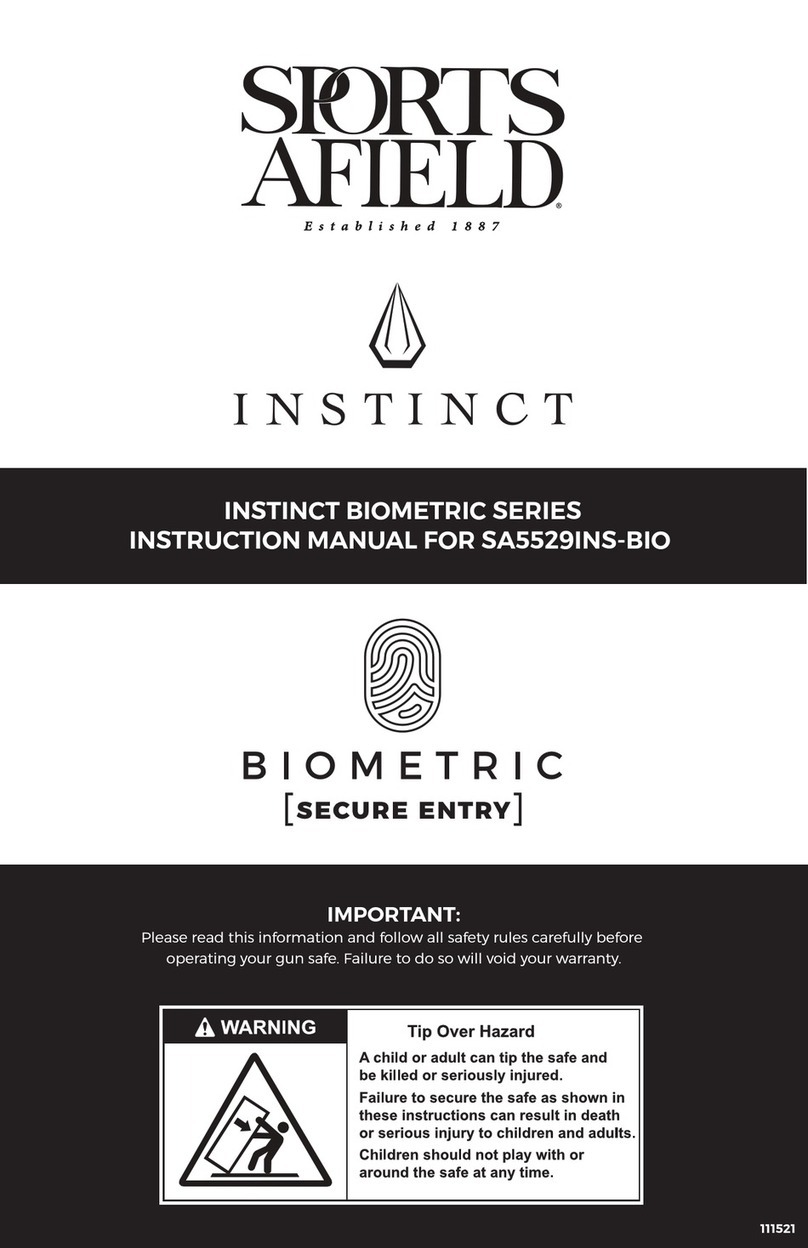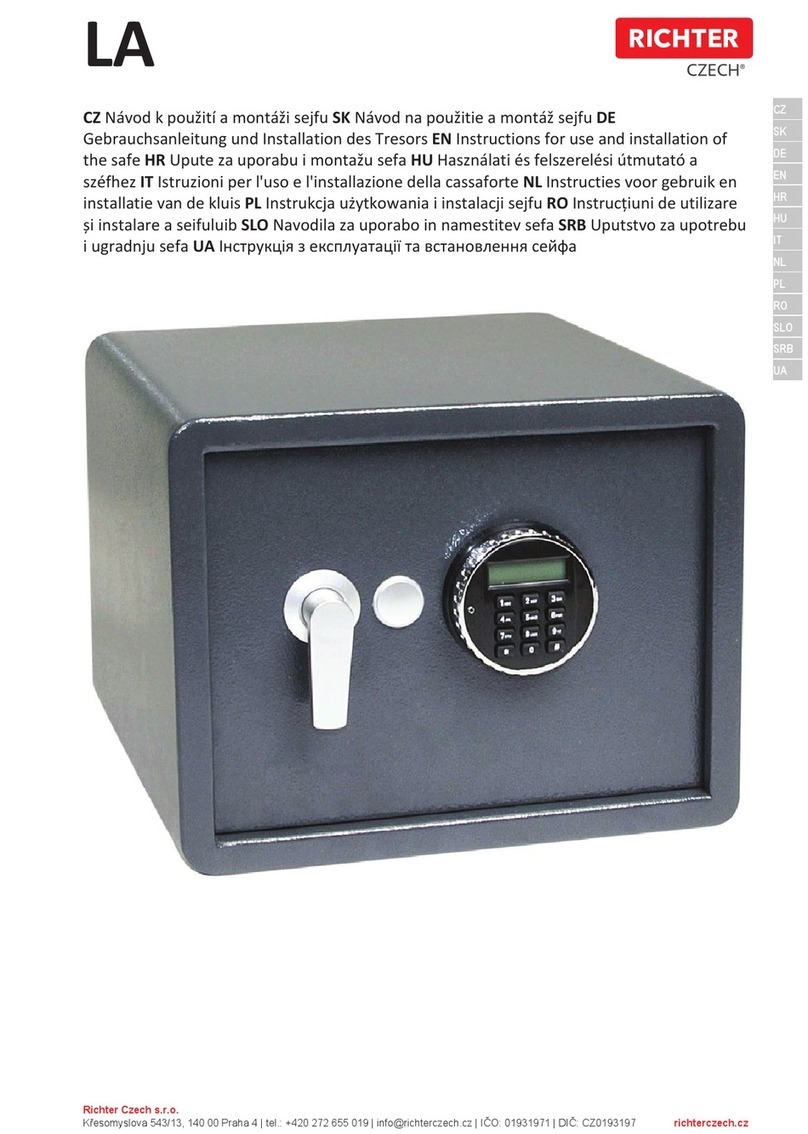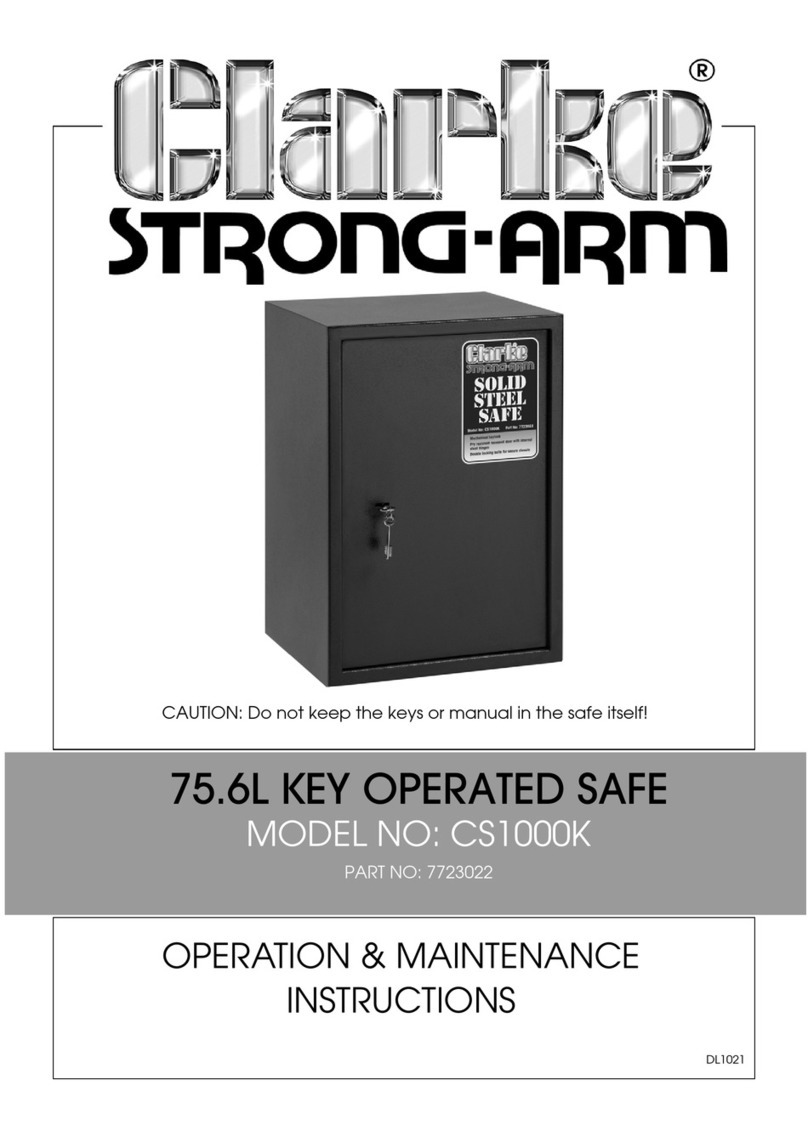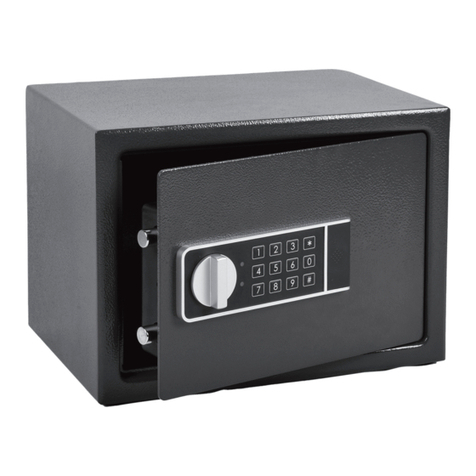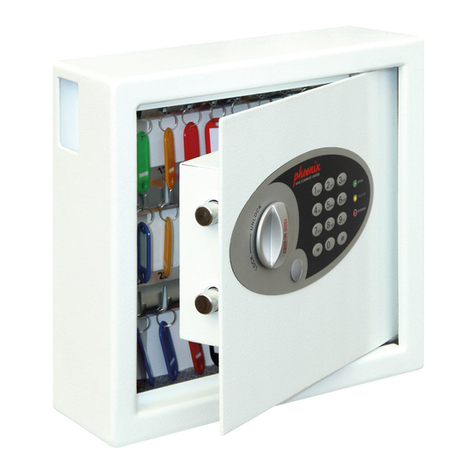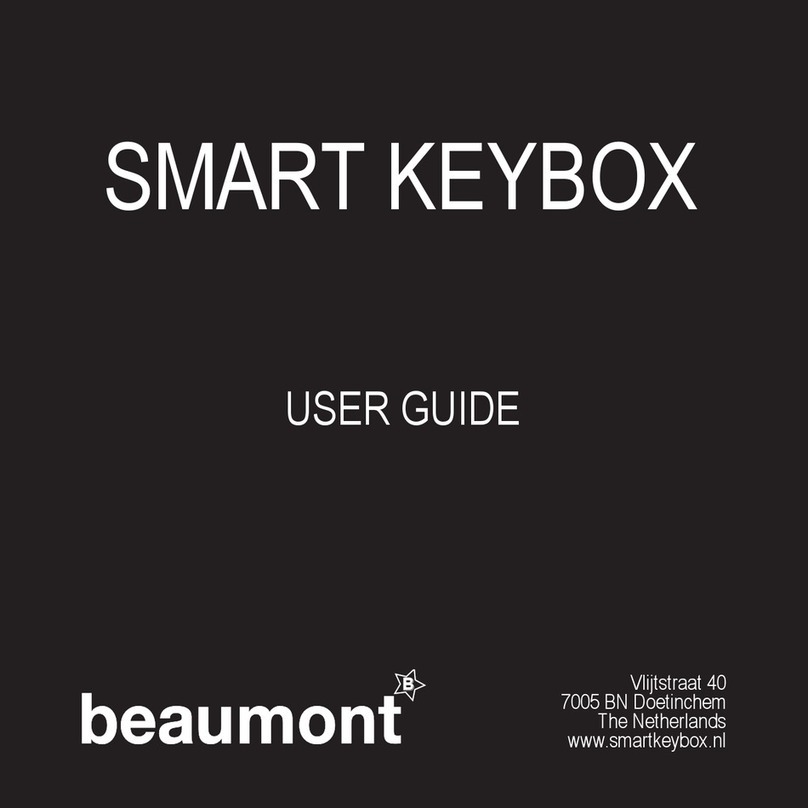
PL
9
Instrukcja oryginalnaSejf meblowy
Spis tre\ci
Przed rozpoczęciem u|ytkowania… . . . . . . . . . 9
Dla PaDstwa bezpieczeDstwa . . . . . . . . . . . . . . . 9
Monta|. . . . . . . . . . . . . . . . . . . . . . . . . . . . . . . . 10
Obsługa . . . . . . . . . . . . . . . . . . . . . . . . . . . . . . . 10
Przechowywanie, transport . . . . . . . . . . . . . . . 11
Zakłócenia i ich usuwanie . . . . . . . . . . . . . . . . 11
Utylizacja . . . . . . . . . . . . . . . . . . . . . . . . . . . . . . 11
Dane techniczne . . . . . . . . . . . . . . . . . . . . . . . . 11
Roszczenia gwarancyjne . . . . . . . . . . . . . . . . . 12
Przed rozpoczęciem u|ytkowania…
U|ytkowanie zgodne z przeznaczeniem
Urządzenie jest przeznaczone do ochrony przed bez-
pośrednim dostępem. Zostało skonstruowane do
użytku w pomieszczeniach i montażu w meblach.
Urządzenie nie posiada kategoryzacji ubezpieczenia.
Urządzenie nie jest przeznaczone do użytku komer-
cyjnego. Koniecznie przestrzegaćuznanych przepi-
sów o zapobieganiu wypadkom i załączonych wska-
zówek bezpieczeństwa.
Wykonywaćtylko czynności opisane w niniejszej
instrukcji użycia. Każde inne zastosowanie jest nie-
zgodne z przeznaczeniem i niedozwolone. Produ-
cent nie ponosi odpowiedzialności cywilnej za wyni-
kające stąd szkody.
Co oznaczajązastosowane symbole?
Ostrzeżenia i informacje w niniejszej instrukcji
obsługi sąwyraźnie oznaczone. W instrukcji wyko-
rzystano następujące symbole:
Dla PaDstwa bezpieczeDstwa
Ogólne wskazówki bezpieczeDstwa
•Aby zapewnićbezpiecznąobsługęurządzenia,
użytkownik musi przeczytaći zrozumiećinstruk-
cjęobsługi przed pierwszym użyciem urządzenia.
•Przestrzegaćwszystkich wskazówek bezpie-
czeństwa pracy! Gdy nie przestrzega sięwskazó-
wek bezpieczeństwa, stwarza sięzagrożenie dla
siebie i innych.
•Przechowywaćwszystkie instrukcje obsługi i
wskazówki bezpieczeństwa do przyszłego wyko-
rzystania.
•W przypadku sprzedaży lub przekazania urzą-
dzenia, należy równieżbezwzględnie przekazać
niniejsząinstrukcjęobsługi.
•Urządzenia wolno używaćtylko w nienagannym
stanie technicznym. Jeżeli urządzenie lub jedna z
jego części sąuszkodzone, to naprawęmusi
wykonaćodpowiedni specjalista.
•Nie używaćurządzenia w pomieszczeniach
zagrożonych wybuchem ani w pobliżu cieczy i
gazów palnych!
•Wyłączone urządzenie zawsze zabezpieczyć
przed niezamierzonym włączeniem.
•Nie używaćurządzeńz uszkodzonym włączni-
kiem/wyłącznikiem.
•Nie dopuszczaćdzieci do urządzenia! Chronić
urządzenie przed dziećmi i osobami nieupoważ-
nionymi.
•Nie przeciążaćurządzenia. Urządzenia używać
wyłącznie zgodnie z przeznaczeniem.
•Pracowaćzawsze, tylko będąc w dobrej kondycji
i zachowując należytąostrożność. Osoby zmę-
czone, chore, będące pod wpływem alkoholu,
leków lub środków odurzających sąnieodpowie-
dzialne i nie sąw stanie bezpiecznie używać
urządzenia.
•Urządzenie nie jest przeznaczone do użytkowa-
nia przez osoby (także dzieci) znajdujące sięw
ograniczonym stanie fizycznym, sensorycznym
lub umysłowym, bądźktórym brakuje doświad-
czenia i/lub wiedzy, chyba że sąpilnowane przez
odpowiedzialne osoby i otrzymały od nich instruk-
cje na temat użytkowania urządzenia.
•Nie pozwól, aby dzieci korzystały z urządzenia dla
zabawy.
•Należy zawsze przestrzegaćobowiązujących
krajowych i międzynarodowych przepisów BHP.
Postępowanie podczas pracy z urządzeniami
zasilanymi na baterie
•Stosowaćwyłącznie baterie dopuszczone przez
producenta urządzenia.
•Niebezpieczeństwo pożaru! Nigdy nie ładować
baterii.
•W przypadku nieużywania urządzenia, baterie
przechowywaćz dala od metalowych przedmio-
tów, które mogąbyćprzyczynązwarcia. Istnieje
wówczas niebezpieczeństwo zranienia i pożaru.
•W przypadku nieprawidłowego zastosowania, z
baterii może wypływaćelektrolit. Może on powo-
dowaćpodrażnienia skóry i poparzenia. Bez-
względnie unikaćkontaktu! Po przypadkowym
kontakcie ze skórądokładnie przemyćwodą. W
przypadku kontaktu z oczami dodatkowo zasię-
gnąć niezwłocznie porady lekarza.
Konserwacja
•Samodzielnie wolno wykonywaćtylko te prace
konserwacyjne i naprawcze, które zostały opi-
sane poniżej. Wszelkie inne prace musząbyć
wykonane przez specjalistę.
•Stosowaćtylko oryginalne części zamienne.
Tylko te części zamienne sąspecjalnie skonstru-
owane i odpowiednie dla tego urządzenia. Inne
NIEBEZPIECZECSTWO! Bezpo\rednie
zagro|enie |ycia i zdrowia! Bezpośred-
nio niebezpieczna sytuacja, która może
spowodowaćśmierćlub ciężkie obrażenia.
OSTRZE{ENIE! Prawdopodobne zagro-
|enie |ycia lub odniesienia obra|eD!
Sytuacja stanowiąca zagrożenie, która
może spowodowaćśmierćlub ciężkie obra-
żenia.
PRZESTROGA! Mo|liwe niebezpieczeD-
stwo zranienia! Niebezpieczna sytuacja,
która może spowodowaćobrażenia.
UWAGA! NiebezpieczeDstwo uszkodze-
nia urządzenia! Sytuacja, która może spo-
wodowaćstraty materialne.
Wskazówka: Informacje pozwalające na
lepsze zrozumienie obsługi.
